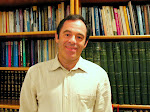 Earlier the teacher told us that the High Priest “takes the blood of the goat, puts down the blood of the bull.” This is because there was only one golden stand there. Otherwise, he would put the bull's blood on one golden stand first and then use the second one for the blood of the goat - and this is the opinion of Rabbi Yehudah. The Sages say that there were two golden stands.
Earlier the teacher told us that the High Priest “takes the blood of the goat, puts down the blood of the bull.” This is because there was only one golden stand there. Otherwise, he would put the bull's blood on one golden stand first and then use the second one for the blood of the goat - and this is the opinion of Rabbi Yehudah. The Sages say that there were two golden stands.
But why does Rabbi Yehudah insist that there was only one stand? Let them make two, and put reminder notes on them, “Bull” and “Goat!” - That is because according to Rabbi Yehudah, people ignore reminder notes, so it would not help. - That could not be, because Rabbi Yehudah agrees that there were thirteen collection chests in the Temple, each marked with its appropriate name, like “New shekalim,” “bird offerings,” etc. He only disagrees about one chest, “Obligatory offerings,” about which he says it did not exist, and instead, this money was collected manually. But why not? Even if that money is accidentally mixed in, let us take out 4 coins and say, “These coins are retroactively designated as the original mixed in coins.” To that, I will answer that Rabbi Yehudah does not agree to the retroactive designation, also called “bereirah.”
And how do we know that Rabbi Yehudah does not accept the principle of retroactive designation? It may be deduced from the argument about tithing wine or from the argument about eruv. In any case, we are by now far away from the original question. The reason Rabbi Yehudah allows only one golden stand is the weakness of the High Priest, who might easily confuse the types of blood if there were two stands.
Art: Bulls And Goats In ASummer Landscape by Albertus Verhoesen

No comments:
Post a Comment